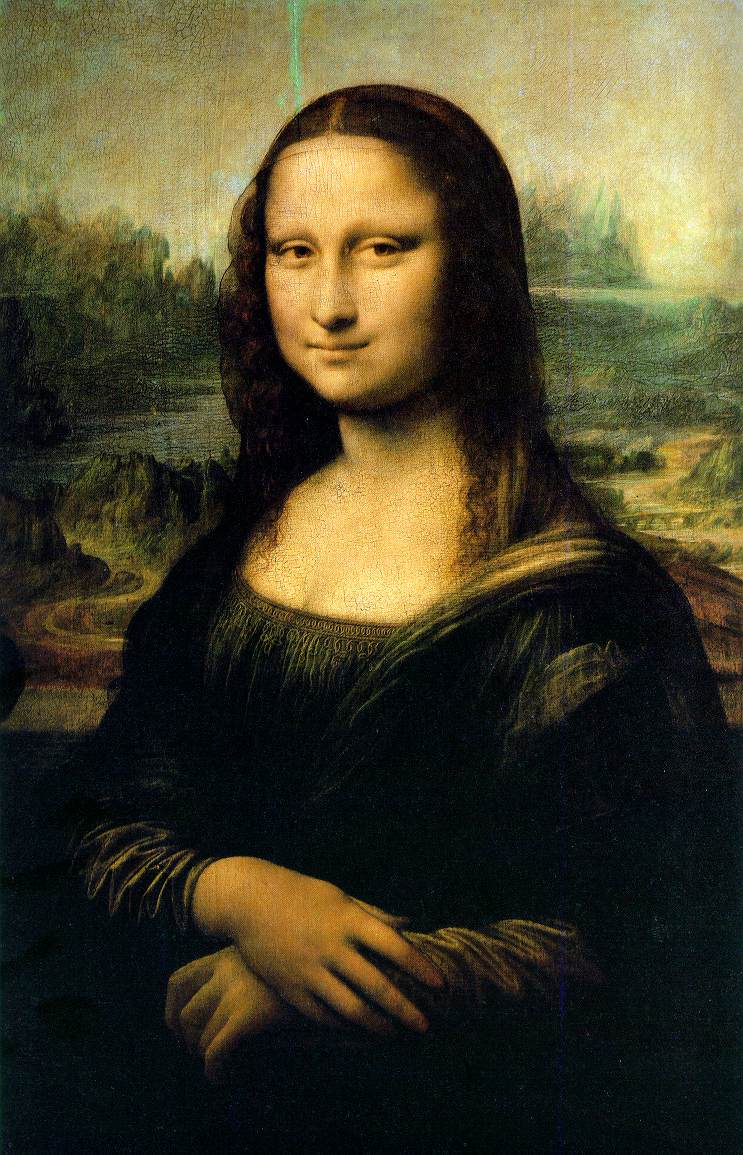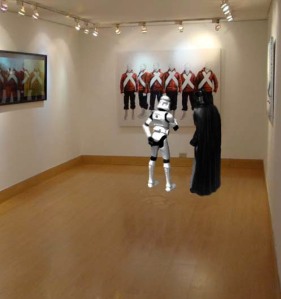Part I: The Elements of Art
If you are someone who approaches art museums or galleries with some trepidation, not because of your fear of echoing hallways and rough security guards, but rather because of your fear of not knowing what's going on and not being able to keep up with artsy-fartsy people who
know about art, then fear no more! I shall rescue you from social discomfort in this small way and impart on you some simple ways to approach and not be intimidated by visual art.
Here are my qualifications: I have my bachelor's degree in History of Art and Visual Culture (we call it HAVC at UCSC), and my master's degree in Art Administration and Museum Studies. I've worked in Science and Art Museums for about 5 years, always in education or programming departments. I'm also currently an art teacher for Pre-Kindergarten through 8th grade at a private school.
There are many theories of art - the branch of philosophy that deals with art primarily is
aesthetics. You can research this as easily as you can go to wiki to look up Snooki's baby's due date. But if you're really in a bind or just don't want to read articles on aesthetics and art theories, here is a quick and dirty guide for approaching art on the most basic level. This approach is based on
Formalism, a philosophy that basically says there is nothing more to anything than what it is made of or what you can observe. Of course, many people will disagree with that statement on a general level, but approaching art on its formal qualities can help create access to something that is really obtuse or alien... like this:
 |
| Sketch for Composition VII, Wassily Kandinsky (1913) |
So the system that will give us access to understanding what the heck is going on here is simple, remember the elements of art:
value,
color,
space,
line,
texture,
form, and
shape. And because I like mnemonic devices, you can remember the elements by this statement:
Vick could spot lovely tarsiers from shore.
 |
| This adorable guy will help
you understand art! |
Here is a brief definition for each element:
- Value - the brightness or darkness (as in light) of something
- Color - you know: red, orange, yellow, green, blue, indigo, violet
- Space - often, consider how much room is around something in a painting, or how large something looks
- Line - as in: horizontal, vertical, diagonal, zigzag, wavy, curvy, dotted, etc. also try to see invisible lines, lines that are made up by different things put next to each other
- Texture - how something looks like it might feel or actually does feel (although most museums WILL NOT allow you to touch art, and I'm on their side on this one)
- Form - 3D shapes like cubes, cylinders, blocks, etc. Things that look like you could reach out and hold them (even if you can't because it's a painting)
- Shape - 2D, squares, stars, triangles, circles, etc. They are flat and don't look like you can pick them up.
To use the elements of art in the act of looking at a work of art, go through the list and make observations for each one. Ask yourself these questions:
- Are there areas of the painting that are lighter or darker than others?
- What colors are used (or is there color at all)?
- Is the person or fruit or building, whatever, very big in the painting, or is it surrounded by a lot of empty space?
- What kinds of lines are used (zigzaggy, curvy, lines that look like teeth or the horizon on a calm beach day)?
- How does one spot look like it might feel if you could touch it?
- Does it seem like you could pick up an item in the image, or is it all just flat?
If you want to get fancy, you can combine the questions to make new questions: What colors are lighter or darker than other colors, or does that thing I want to pick up look like it is made of razor blades?
Let's take a quick example from a famous piece...
 |
| Portrait of Mona Lisa (La Gioconda),
Leonardo da Vinci (1503-1506) |
You probably have seen this painting (it's possibly one of the most reproduced images ever), and you might even have some ideas about this painting from certain movies or documentaries on TV. But what if you are a 4" tall Stormtrooper from a galaxy far far away who knows little of the Renaissance Man and his mysterious muse? What if you're suddenly in a position where you need to impress your intense manager who happens to be a very important Sith Lord, and he is only interested in paintings from the 16th century? Well, just remember Vick and those lovely tarsiers!
There are a lot of light and dark regions of the painting, the lighter parts surrounding the woman's head and highlighting her face. The colors are pretty limited to blues, yellows, blacks and browns, although there seems to be some reds and oranges mixed into parts of the face. The woman is large in the picture, with the space around her fitting tightly to her figure. The lines of the woman's clothes are wavy and curvy, they make her look soft and delicate, especially because behind her are jagged zigzagged lines that look like rough and rocky mountains. The woman's face is round and full, she seems so warm and lovely, I feel like I could touch her cheek and it would be very soft.
*sigh* Isn't that sweet?
You can get a lot of mileage out of just the elements themselves, but combining them with the principles of art is art-snob level 10! Principles of Art in our next installment...







No comments:
Post a Comment